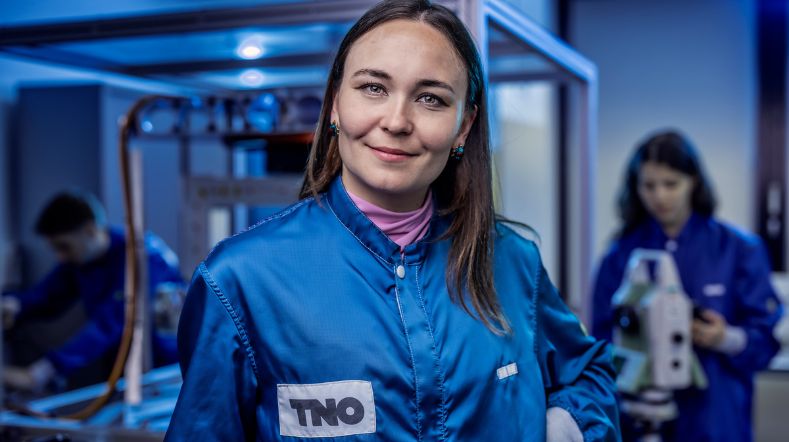SmallCAT laser communication system delivered for integration to Norwegian NORSAT-TD Spacecraft
Following an extensive performance and environmental testing program, the SmallCAT (Small Communication Active Terminal) laser communication system has been delivered by TNO to UTIAS SFL (University of Toronto Institute for Aerospace Studies Space Flight Laboratory), for integration into the Norwegian NORSAT-TD spacecraft. The launch of the spacecraft will be in early 2023 after which an in orbit demonstration of SmallCAT will ensue to increase data transmission capabilities of small satellites via direct to earth laser communication.

Optical satellite communication
The SmallCAT uses new optical communication technology that uses satellites to send information to Earth. This happens via invisible light signals and enables much faster data transfers than using the radio frequencies currently employed for communication everywhere. Where radio frequencies are limited to some gigabits per second (Gbps), using laser communication can increase the transmission capabilities of these satellites ten to hundred fold. On top of that laser communication links are also interesting in the lower speeds (Gbps) as the data links are much more secure and systems have much lower size, weight and power, which is important in Space.
European cooperation
SmallCAT consists of a <1U laser terminal module (smaller than 10 x 10 x 10 centimetre) called CubeCAT mounted into a novel mechanical shock and vibration damping structure. The SmallCAT will be a hosted payload onboard the Norsat-TD Spacecraft, which is commissioned and operated by the Norwegian Space Agency (NOSA) and which will be launched in early 2023. SmallCAT will demonstrate a 1 Gbps, CCSDS 03K compliant high speed downlink (The Consultative Committee for Space Data Systems). The CubeCAT module is mounted into a highly damped and hysteresis free suspension system developed by TNO that will allow to withstand the NORSAT-TD satellite launch loads.
When in orbit SmallCAT will communicate primarily with the TNO optical ground station at a TNO location in The Hague, The Netherlands. It is also targeted that SmallCAT will communicate with other European optical ground stations which form part of the nucleus OGS network initiative led by KSAT (Kongsberg Satellite Services).

Project partners and funding
SmallCAT has been developed in a consortium led by TNO and includes the Dutch company AAC Hyperion (part of AAC Clyde Space) for the onboard electronics, drivers as well as software, and the UK company Gooch & Housego (laser transmitter). The development of SmallCAT was financed with NSO funds from the ESA ARTES program and the Ministry of Defense from their innovation budget. TNO also contributed in co-funding this program.
Get inspired
First Dutch hybrid quantum channel for secure communication successfully established


TNO's laser communication terminal secures prestigious win at EARTO Innovation Awards


TNO launches Qu-STAR to pioneer quantum internet via space


This is our time: Industrialising TNO's optical satellite communication technology


This is our time: working on breakthroughs in laser satellite communication


